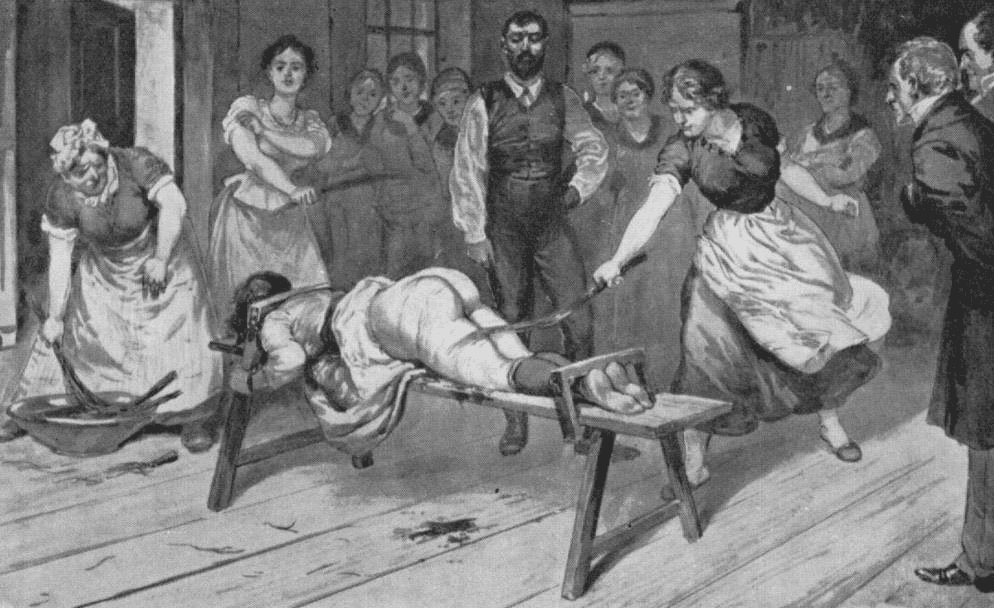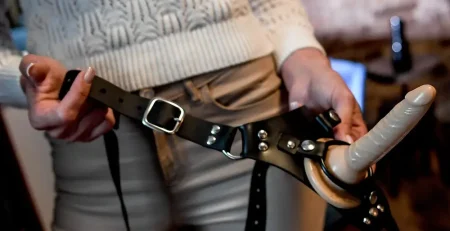
The Intriguing History of Bondage: From Ancient Practices to Modern Expression
Siobhan P2024-08-30T12:51:28+01:00The art and practice of bondage, a complex and multifaceted form of sexual expression, have deep historical roots that span cultures and centuries. Bondage, often misunderstood or stigmatized, is a practice that has evolved significantly over time, reflecting changing societal norms, artistic expressions, and psychological understandings. This blog post delves into the rich history of bondage, tracing its origins from ancient practices to its modern manifestations.
Ancient Roots and Cultural Significance
Bondage, in various forms, has been practiced for millennia, with evidence found in ancient civilizations across the globe. In ancient Japan, for example, the art of Shibari, or Kinbaku, emerged as a form of erotic bondage. This practice involved intricate rope patterns used to tie up individuals, initially as a method of restraining prisoners. Over time, Shibari evolved into an artistic and sexual practice, emphasizing the aesthetic and spiritual connection between the participants. The detailed rope work, known as Kinbaku-bi (the beauty of tight binding), became a celebrated art form in Japanese culture.
Similarly, ancient Egypt depicted scenes of bondage in its artwork. Tomb paintings and carvings illustrate individuals in various restrained positions, suggesting that bondage might have played a role in ritualistic or religious contexts. The precise meanings of these depictions remain a subject of scholarly debate, but they underscore the long-standing human fascination with restraint and submission.
Medieval and Renaissance Eras: Bondage in Art and Literature
During the medieval period, bondage was often depicted in religious and moral contexts. The concept of chastity belts, although likely more myth than reality, reflects societal concerns with purity and control over one’s body. These devices, often associated with the Crusades, symbolize a form of enforced restraint, albeit not directly linked to the erotic practices of bondage as understood today.
The Renaissance brought a renewed interest in human anatomy and sexuality, influencing the way bondage was perceived and practiced. Erotic literature from this period, such as “The Decameron” by Giovanni Boccaccio, explored themes of power, control, and restraint, albeit in a more metaphorical sense. Artists like Leonardo da Vinci and Michelangelo studied the human form in great detail, sometimes depicting it in states of restraint, highlighting the tension and beauty of the human body under duress.
19th Century: The Birth of Modern Bondage
The 19th century marked a significant turning point in the history of bondage, with the rise of more explicit and documented erotic practices. The Victorian era, known for its strict moral codes, paradoxically saw a flourishing of underground sexual exploration, including bondage. The invention of photography provided a new medium to capture and disseminate images of bondage, making it more accessible to a broader audience.
The work of Leopold von Sacher-Masoch, particularly his novel “Venus in Furs,” played a crucial role in popularizing the themes of dominance and submission. The term “masochism,” derived from his name, reflects the complex interplay of pleasure and pain that characterizes many bondage practices. This period also saw the emergence of underground clubs and societies where individuals could explore bondage and other forms of BDSM (Bondage, Discipline, Sadism, and Masochism) in a relatively safe and consensual environment.
20th Century: From Taboo to Acceptance
The 20th century witnessed significant changes in societal attitudes towards bondage and BDSM. The sexual revolution of the 1960s and 1970s challenged traditional norms and encouraged more open discussions about sexuality. Publications like “The Story of O” by Pauline Réage and the works of photographer Robert Mapplethorpe brought BDSM themes into mainstream awareness, though often amid controversy.
The rise of the internet in the late 20th century revolutionized the way bondage and BDSM communities formed and communicated. Online forums, chat rooms, and websites provided platforms for individuals to share information, seek advice, and connect with like-minded people. This digital revolution helped demystify bondage, presenting it as a consensual and often deeply meaningful practice rather than something to be hidden or ashamed of.
Modern Bondage: Art, Therapy, and Consent
Today, bondage is widely recognized as a legitimate form of sexual and artistic expression. Contemporary practitioners emphasize the importance of consent, communication, and safety, distinguishing modern bondage practices from abusive or non-consensual acts. Workshops, conferences, and festivals dedicated to BDSM and bondage education have proliferated, offering safe spaces for learning and exploration.
In addition to its erotic appeal, bondage has found a place in therapeutic contexts. Some psychologists and therapists incorporate elements of bondage and BDSM into their practices, helping individuals explore issues of trust, control, and trauma in a controlled and consensual environment.
The artistic aspect of bondage continues to thrive, with photographers, painters, and performance artists exploring the aesthetic and emotional depths of restraint. Shibari, in particular, has experienced a renaissance, with practitioners around the world studying and teaching this ancient Japanese art form, emphasizing both its visual beauty and its potential for deep human connection.
Conclusion: The Ever-Evolving Art of Bondage
The history of bondage is a testament to the enduring human fascination with power, control, and connection. From ancient rituals to modern-day art and therapy, bondage has evolved to reflect broader societal changes and the complexities of human sexuality. As we continue to explore and understand this practice, it is crucial to emphasize the principles of consent, communication, and mutual respect that underpin safe and fulfilling bondage experiences.
BondageBox celebrates this rich history and encourages ongoing exploration and education within the bondage community. By understanding the past, we can better appreciate the present and look forward to the future of this intricate and captivating form of expression.
Leave a Reply Cancel reply
You must be logged in to post a comment.











Comments (2)
Wow, I had no idea how rich and diverse the history of bondage is. This post does a fantastic job of tracing its evolution through the ages. It’s impressive to see how these practices have transformed and adapted over time.
Nice job on this post. Lotts of interesting information.